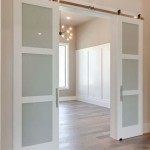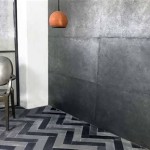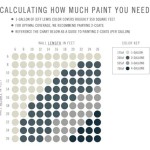How Much Should an Interior Designer Charge Per Square Foot?
Determining the appropriate fee for interior design services can be a complex undertaking, particularly when considering the per-square-foot pricing model. This approach, while seemingly straightforward, involves numerous variables that can significantly influence the final cost. Understanding these factors is crucial for both interior designers seeking to price their services competitively and clients attempting to budget for their projects effectively. This article will explore the nuances of the per-square-foot charging method, examining its advantages, disadvantages, and the key elements that contribute to determining a fair and accurate rate.
The per-square-foot pricing model offers a simplified way to estimate and charge for interior design services. It involves calculating the total area of the space to be designed and multiplying that figure by a predetermined rate. This rate is typically based on factors such as the designer's experience, location, the complexity of the project, and the scope of services included. While this model provides a quick and easy way to get a ballpark estimate, it's essential to understand its limitations and potential for inaccuracies.
Compared to other pricing methods like hourly rates or fixed fees, the per-square-foot rate can offer greater transparency and predictability, especially for clients who want a clear upfront cost estimate. However, it's important to recognize that this method assumes a certain level of uniformity across the entire space. In reality, some areas may require significantly more design attention and customization than others, leading to discrepancies between the estimated cost and the actual workload.
Factors Influencing the Per-Square-Foot Rate
Several key factors contribute to the determination of an interior designer's per-square-foot rate. These factors reflect the designer's expertise, overhead costs, the scope of the project, and the prevailing market conditions. A comprehensive understanding of these elements is crucial for arriving at a fair and justifiable fee.
One of the most significant factors is the designer's experience and reputation. Seasoned designers with a proven track record of successful projects can typically command higher rates than those who are just starting out. Their expertise and established network of contractors and suppliers can add considerable value to the project, justifying the premium they charge. Furthermore, designers with specialized skills or certifications, such as LEED accreditation or expertise in sustainable design, may also be able to charge higher rates due to their unique qualifications.
The location of the project and the designer's operating costs also play a crucial role. Designers in major metropolitan areas with higher overhead costs, such as rent, insurance, and salaries, will generally charge more per square foot to cover their expenses. Similarly, the cost of living in the project's location can also influence the rate. Projects in affluent areas with high demand for design services may command higher rates than those in less competitive markets. The cost of materials can also be affected by location, particularly if the project requires the sourcing of specialized or imported items.
The scope of services included in the per-square-foot rate is another critical consideration. Some designers may offer a comprehensive package that includes space planning, furniture selection, material sourcing, project management, and installation supervision. Others may offer a more limited range of services, such as concept development or furniture layout, at a lower rate. It's essential to clarify exactly what is included in the per-square-foot rate to avoid misunderstandings or unexpected costs later on. For example, will the designer be responsible for obtaining permits, coordinating with contractors, or handling the procurement of furniture and accessories?
The complexity of the project is also a significant determinant of the per-square-foot rate. A simple renovation project involving mostly cosmetic updates will typically cost less than a complete gut renovation that requires structural modifications, plumbing, and electrical work. Projects with intricate architectural details, custom millwork, or specialized finishes will also command higher rates due to the increased design time and expertise required. The presence of existing conditions that need to be addressed, such as asbestos abatement or structural repairs, can also add to the complexity and cost of the project.
Advantages and Disadvantages of Per-Square-Foot Pricing
The per-square-foot pricing model offers certain advantages, particularly in terms of simplifying the estimation process and providing clients with a clear initial cost projection. However, it also has limitations that can lead to inaccuracies or dissatisfaction if not carefully managed. Understanding both the pros and cons is essential for making informed decisions about pricing and budgeting.
One of the main advantages is its simplicity. It's easy to calculate and communicate, making it a readily understandable metric for clients. This transparency can help build trust and facilitate the initial stages of the project. The per-square-foot rate can also serve as a benchmark for comparing quotes from different designers, allowing clients to assess the value proposition of each. For large-scale projects, this method can provide a quick and relatively accurate overall cost estimate, enabling clients to plan their budget accordingly.
However, the simplicity of the per-square-foot method can also be its downfall. It doesn't always accurately reflect the actual time and effort required for different design tasks. For example, a small but highly detailed bathroom may require significantly more design time than a large, open-plan living room. The per-square-foot rate may undervalue the work involved in these specialized areas. Similarly, projects with complex technical requirements or unique design challenges may not be adequately compensated under this pricing model.
Another disadvantage is its potential to incentivize designers to focus on increasing square footage rather than maximizing design efficiency or quality. This can lead to a focus on quantity over quality, potentially compromising the overall design outcome. Clients may also feel that they are paying for areas of the space that require little or no design intervention, such as storage rooms or hallways, leading to dissatisfaction with the perceived value for money. The potential for cost overruns is also a concern, particularly if the initial estimate does not fully account for unforeseen complications or changes in the project scope.
Furthermore, the per-square-foot rate may not be suitable for all types of projects. For example, it's less applicable to projects that involve primarily furniture selection or styling, where the focus is not on the overall space but on individual elements. In these cases, hourly rates or fixed fees may be more appropriate. Similarly, projects that are phased or involve multiple stages may be better suited to alternative pricing models that allow for greater flexibility and customization.
Alternative Pricing Models for Interior Design Services
While the per-square-foot method is a common approach, it's not the only option for pricing interior design services. Other models, such as hourly rates, fixed fees, and percentage-based fees, offer alternative ways to structure compensation. Each model has its own advantages and disadvantages, and the best choice depends on the specific nature of the project and the client's preferences.
Hourly rates involve charging clients a predetermined amount for each hour of work performed. This model is often used for smaller projects or for tasks that are difficult to estimate in advance, such as consultations, troubleshooting, or revisions. Hourly rates offer flexibility and transparency, allowing clients to pay only for the actual time spent on their project. However, they can also be unpredictable, as the total cost depends on the efficiency of the designer and the complexity of the tasks involved. Clients may be hesitant to approve design changes or explore new ideas if they are concerned about the potential for increased hourly charges.
Fixed fees involve agreeing on a set price for a specific scope of work. This model provides greater cost certainty for clients and can be particularly suitable for projects with well-defined requirements and a clear design direction. Fixed fees require a thorough understanding of the project scope and the time and effort required to complete it. Designers need to carefully estimate their costs and factor in contingencies to avoid losing money. While fixed fees offer predictability, they can also be less flexible than hourly rates if the project scope changes or unforeseen issues arise.
Percentage-based fees involve charging clients a percentage of the total project cost, including materials, labor, and other expenses. This model is often used for larger projects with significant budgets, as it aligns the designer's interests with those of the client. The designer has an incentive to manage costs effectively and ensure the project is completed within budget. However, percentage-based fees can be less transparent than other models, as the final cost depends on a variety of factors that are outside the designer's direct control. Clients may be concerned about potential conflicts of interest, particularly if the designer is also involved in sourcing materials or recommending contractors.
Ultimately, the choice of pricing model is a matter of negotiation and mutual agreement between the designer and the client. It's essential to carefully consider the advantages and disadvantages of each model and to choose the one that best aligns with the project's goals and the client's budget. Clear communication and transparency are crucial for building trust and ensuring a successful working relationship.
In conclusion, determining how much an interior designer should charge per square foot involves careful consideration of numerous factors, including experience, location, scope of services, and project complexity. While this pricing model offers simplicity and ease of understanding, its limitations must be acknowledged. Alternative pricing models, such as hourly rates, fixed fees, and percentage-based fees, may be more appropriate for certain projects. A thorough understanding of these factors and a transparent approach to pricing are essential for establishing a fair and mutually beneficial agreement between the interior designer and the client.

Interior Designer Cost Fees Fixr

How Much Does It Cost To Hire An Interior Designer Sfd

How Much Does An Interior Designer Cost Pacaso

How Much Does Interior Design Cost Octane Seating

How Much Does An Interior Designer Cost In 2025 Decorilla Design

What Does Cost Of Hiring An Interior Designer In 2024

How Much Does An Interior Designer Cost In 2025 Decorilla Design

Simple Ways To Charge As An Interior Designer 8 Steps

How Much Does An Interior Designer Cost Pacaso

2025 Interior Designer Costs Charges Hourly Rates Fees To Hire
Related Posts








